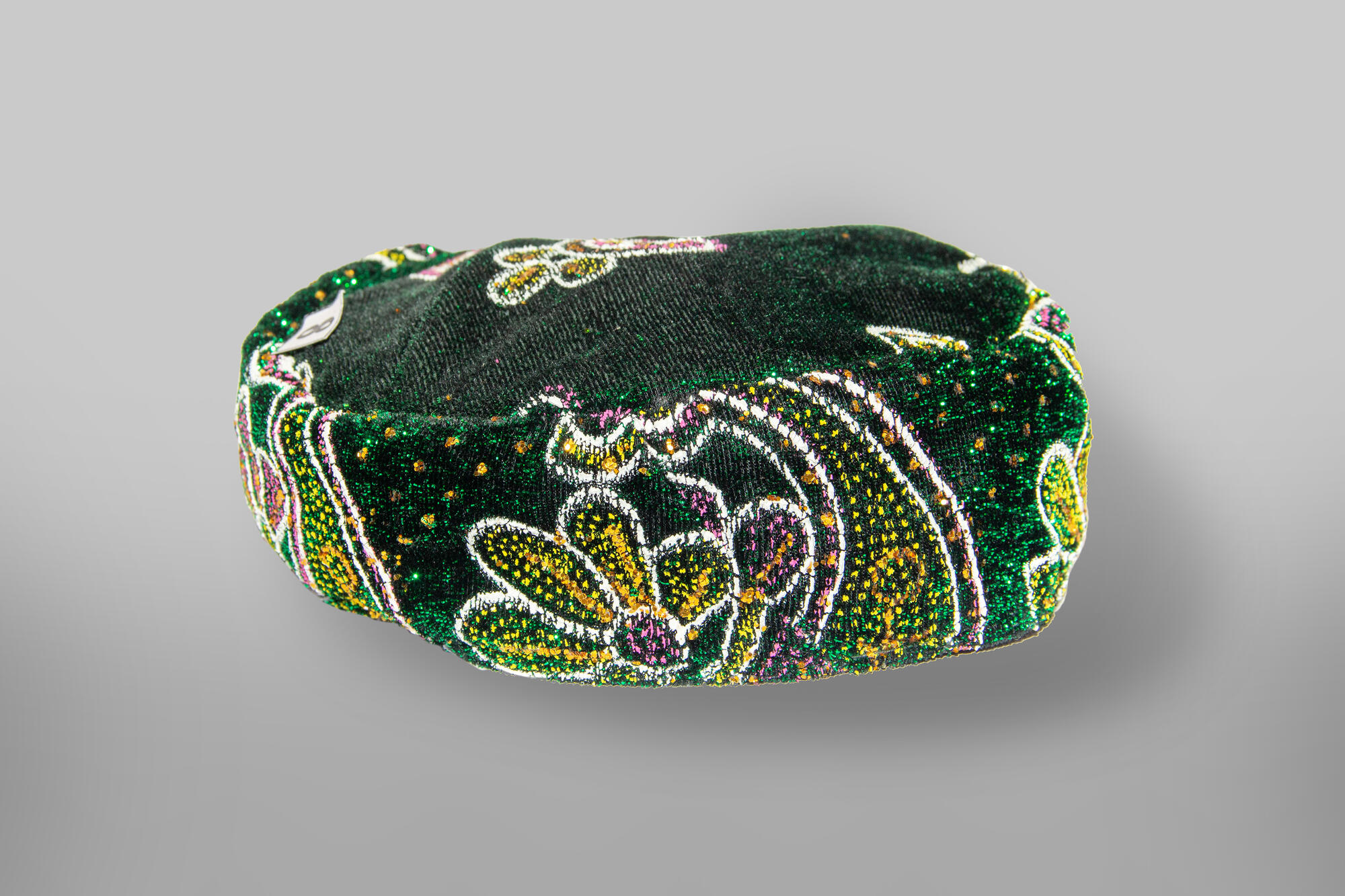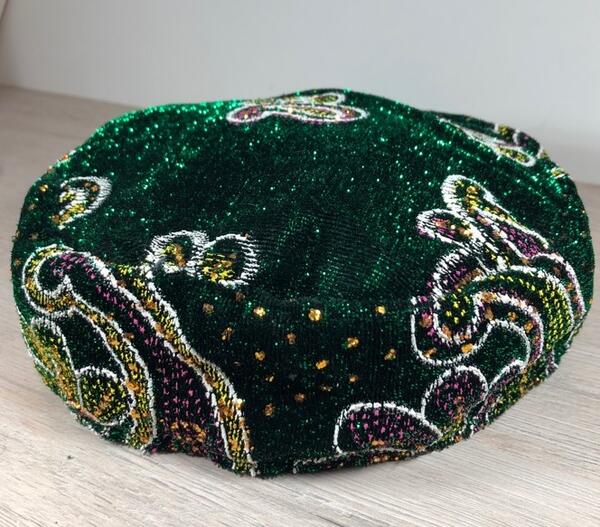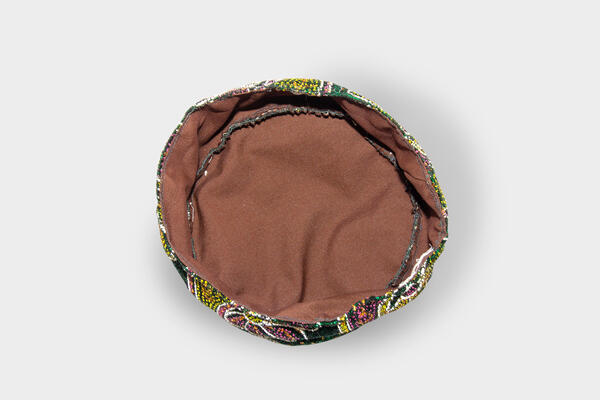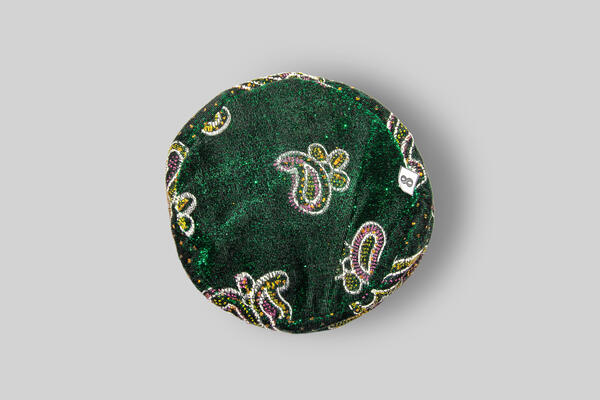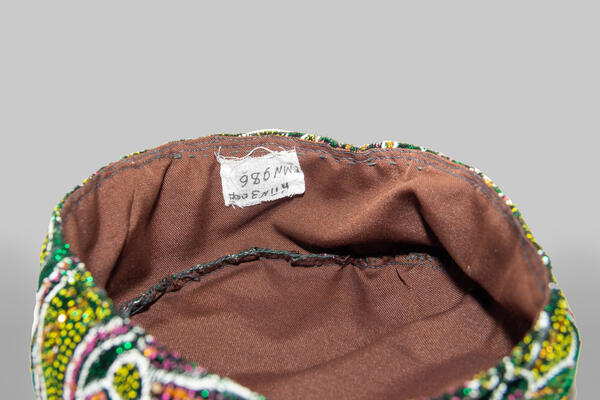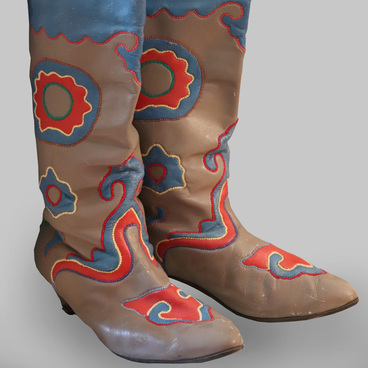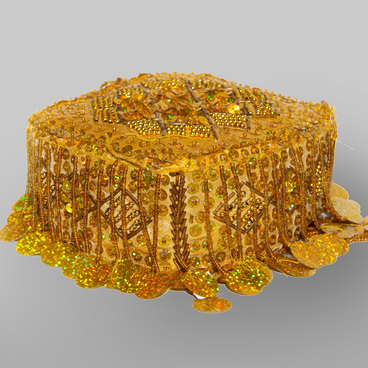The tubeteika has remained the most famous element of the Tatar men’s costume. There is a considerable variety of tubeteikas: they can be made of velvet, without embroidery, with a flat or pointed top, decorated with silk, gold or silver threads, sequins, stones, beads, and pearls. The manufacturing of tubeteikas has been historically a female job, but everyone wore this headdress — men, women, and children. A tubeteika was the first headdress in the lives of boys: they began to wear it in early childhood.
Tubeteikas were so different, because once they carried a lot of information: looking at this headdress, people could easily identify where the person came from and what he did for a living. A tubeteika’s ornament, shape and color scheme helped to determine from which area the person was, what his status was, as well as the wearer’s approximate age. When Islam came to Central Asia, tubeteikas retained their importance, but in a slightly different form: men everywhere began to use skullcaps in order to comply with the rule and not leave the house with their heads uncovered.
In our time, the purpose of tubeteikas has changed. Firstly, the headdress protects the head from the burning sun, and secondly, it has also become part of the religious costume. Tubeteikas also perform a practical function: araqchin tubeteikas made of cotton fabric are used in the East just as nightcaps were used in Europe.
Until the 20th century, men had not worn tubeteikas as a separate headdress. They tied a turban on top, and women put a veil, scarf or shawl on top of the tubeteika. With the advent of Soviet power, the tubeteika not only turned into a headdress that could be worn on its own, but it also began to be perceived as a symbol of the diversity and friendship of the peoples of the USSR. Tubeteikas came into fashion, and tourists who came from afar brought them home as souvenirs.
This headdress is extremely popular with many peoples; it has long been worn in the Volga region and the Urals, the Caucasus, the Crimea, and Central Asia. The name that is used in Russian originated from the consonance with the Tatar word “tubetey”, meaning “hat”. In other languages, the tubeteika has different names, Azerbaijanis call it “araqchin”, Uzbeks use the word “duppi”, but, for example, in Samarkand this headdress is called “kalpok”.
One of the museum exhibits is a green tubeteika with a lining, embroidered with lurex threads.
Tubeteikas were so different, because once they carried a lot of information: looking at this headdress, people could easily identify where the person came from and what he did for a living. A tubeteika’s ornament, shape and color scheme helped to determine from which area the person was, what his status was, as well as the wearer’s approximate age. When Islam came to Central Asia, tubeteikas retained their importance, but in a slightly different form: men everywhere began to use skullcaps in order to comply with the rule and not leave the house with their heads uncovered.
In our time, the purpose of tubeteikas has changed. Firstly, the headdress protects the head from the burning sun, and secondly, it has also become part of the religious costume. Tubeteikas also perform a practical function: araqchin tubeteikas made of cotton fabric are used in the East just as nightcaps were used in Europe.
Until the 20th century, men had not worn tubeteikas as a separate headdress. They tied a turban on top, and women put a veil, scarf or shawl on top of the tubeteika. With the advent of Soviet power, the tubeteika not only turned into a headdress that could be worn on its own, but it also began to be perceived as a symbol of the diversity and friendship of the peoples of the USSR. Tubeteikas came into fashion, and tourists who came from afar brought them home as souvenirs.
This headdress is extremely popular with many peoples; it has long been worn in the Volga region and the Urals, the Caucasus, the Crimea, and Central Asia. The name that is used in Russian originated from the consonance with the Tatar word “tubetey”, meaning “hat”. In other languages, the tubeteika has different names, Azerbaijanis call it “araqchin”, Uzbeks use the word “duppi”, but, for example, in Samarkand this headdress is called “kalpok”.
One of the museum exhibits is a green tubeteika with a lining, embroidered with lurex threads.
